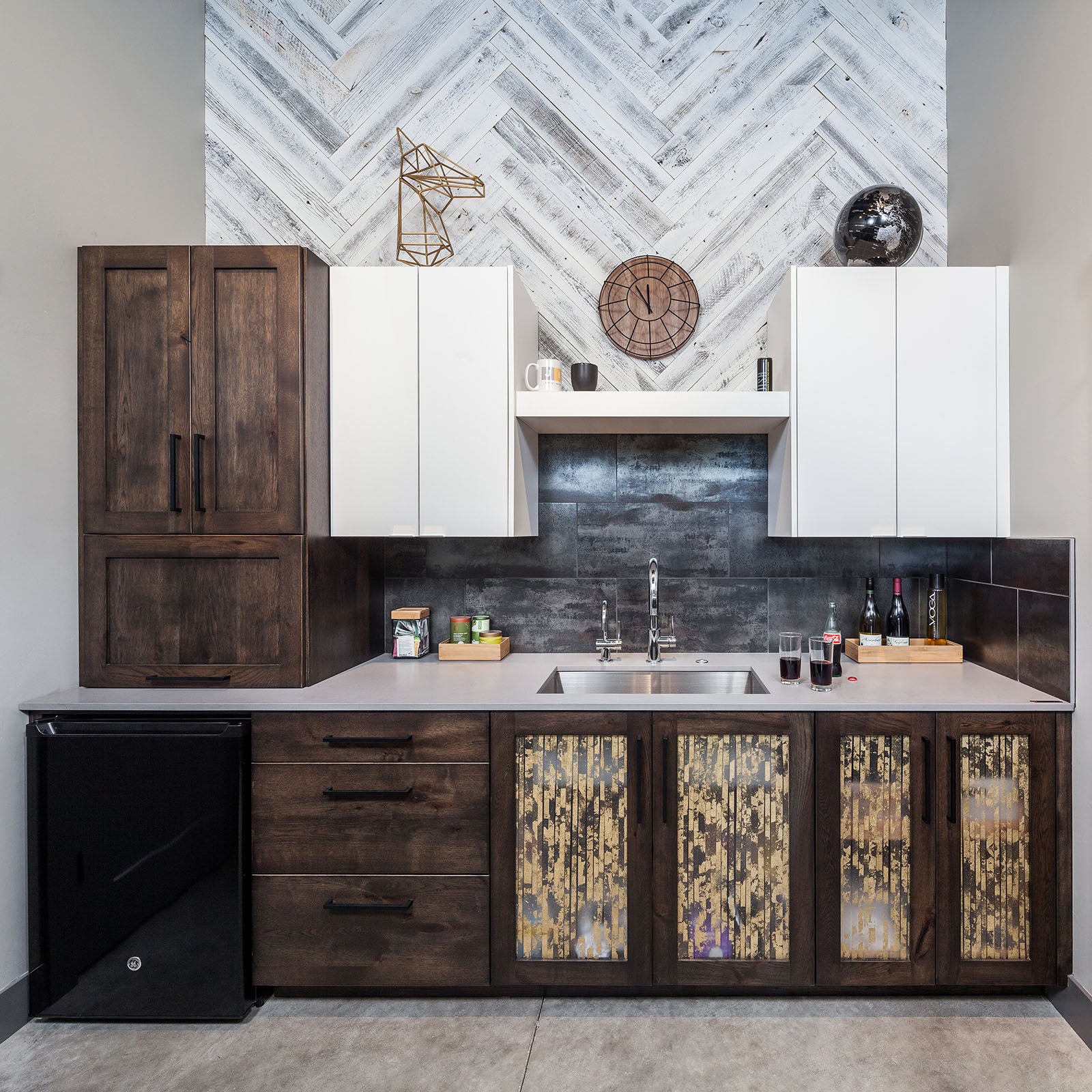In what is surely one of the oldest cases of mistaken identity in design, the herringbone and chevron patterns are often referenced interchangeably. However, each of these millennia-old zigzag motifs has a distinct history, arrangement, aesthetic, and design potential. Before you put either to work on your interior wood plank walls, learn the key differences between these commonly confused patterns.

Style: Hamptons | Photo Credit to @sarahoutandabout and @stephaniepohlmandesigns
History
Pharaohs in Ancient Egypt donned herringbone fabrics and jewelry long before it was enlisted in interior wood plank walls. Its iconic status was cemented circa 500 B.C. during the Roman Empire when it was used in the "Viae Publicae" road system. By 1539, wood herringbone had reached the floors of the Francois I Gallery at the Château de Fontainebleau.
Not to be overshadowed, the chevron pattern cropped up on Grecian pottery as early as 1800 B.C. Wood chevron was eventually deemed worthy of French royalty; architect Nicodermus Tessin noted its appearance on the floor of The Queen’s Guard room at Versailles in 1693.
Both patterns remained popular throughout the eighteenth and nineteenth century on textiles, parquet flooring, and interiors. Between the 1950s and 1970s, the patterns found their way to wood interior walls, where they continue to be a fixture to this day.
Arrangement
On herringbone interior wood plank walls like this Reclaimed Weathered Wood White kitchen wall, the end of each wood panel abuts the side of another to create a staggered interlocking pattern of full rectangular panels resembling the bones of a herring fish. This arrangement of wood interior wall paneling does away with the need to angle-cut the edges of individual panels before mounting them.
Chevron, derived from the French word for rafter, was so named because it resembles shallow roof rafters. Chevron reclaimed wood walls like this fireplace focal point consist of angular panels that meet at a point to create a “V-shaped” pattern. Since the edges of the panels must be cut at an angle before being mounted, installing chevron wood paneling interior walls takes slightly longer than installing herringbone wood interior wall paneling.
Aesthetic
The crooked-chic pattern of herringbone reclaimed wood walls results in a patina that is more freeform and unrestrained. You can play up this artfully off-kilter look by choosing multi-toned wood panels, such as those used in this Reclaimed Weathered Wood Gray hallway.
Chevron interior wood plank walls feature a more clean-cut, structured silhouette. The reclaimed oak interior wall paneling on this bedroom wall allows the clean lines of the pattern to take on a razor-sharp appearance that turns heads.

Style: Charcoal
Design Potential
The herringbone pattern brings the maximum benefit to interior wood plank walls in confined or clinical spaces that can do with more dynamism, whereas the chevron pattern can do wonders for walls in transitional spaces in need of definition.

Style: Hamptons
With peel-and-stick wood interior wall paneling in a variety of colors, textures, and sizes, you can recreate either pattern on walls in any interior, from the kitchen to the mudroom.
Generally, more highly textured wood panels in nature-inspired tones, such as Sienna, allow you to achieve more rustic wood paneling interior walls, while less textured panels in darker colors, such as Charcoal, give off a more industrial ambiance.

Style: Vertical Grain Mountain Moss
Similarly, shorter planks of wood interior wall paneling allow you to fit in more occurrences of the pattern on wood walls for a more stimulating look. Longer planks result in fewer occurrences of the pattern, and a more subdued look like the above bedroom wall.
Snag Stikwood samples today to create wood walls in either of these timeless patterns!
Don't forget to sign up!
Join our newsletter to stay informed with new product releases, designer spotlights and promotions.




